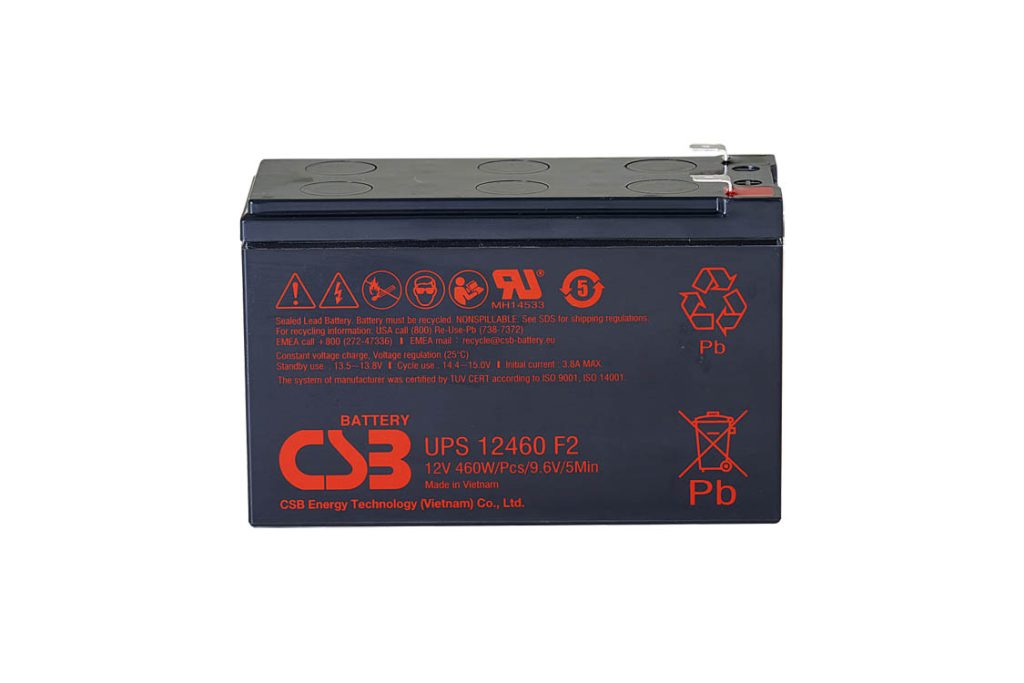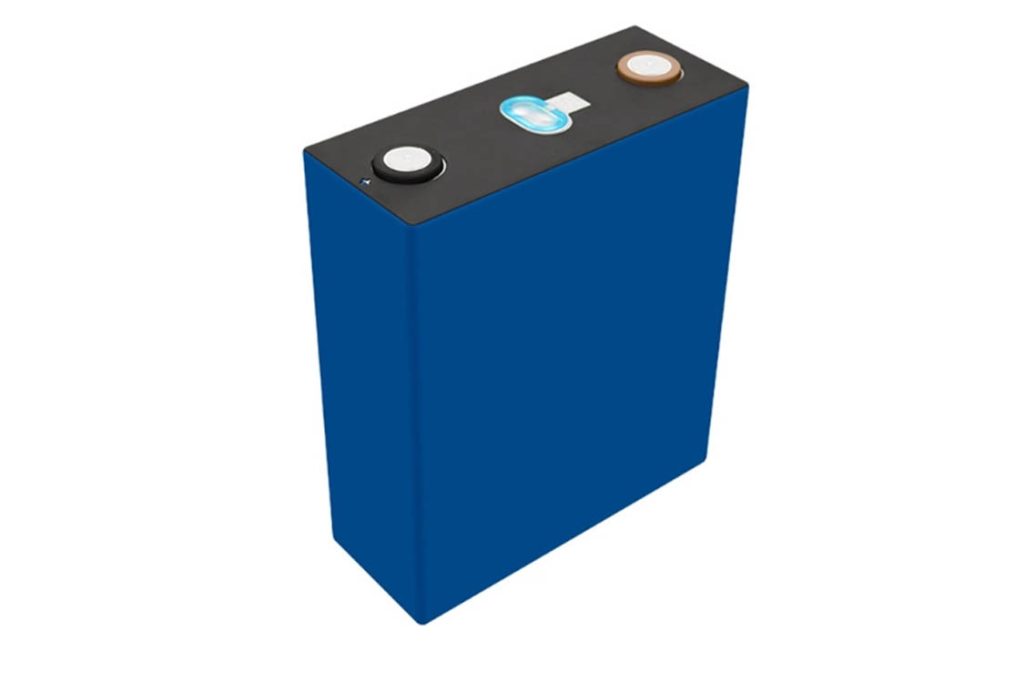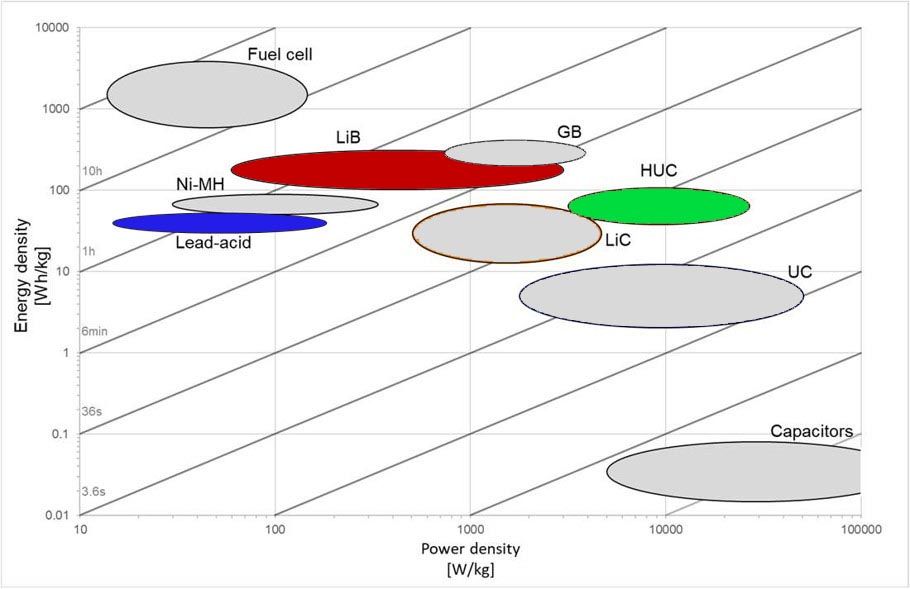In mission-critical environments, selecting the right UPS energy storage technology can mean the difference between smooth operation and costly downtime. This comparison explores three leading UPS energy storage technologies—Lead Acid Batteries and Lithium-ion Batteries—to help you make the best decision based on performance, cost, durability, and safety.
Lead Acid Batteries
 Proven, Cost-Effective, and Widely Available
Proven, Cost-Effective, and Widely Available
Lead acid batteries have powered UPS systems for decades. They are a mature technology known for affordability and predictable performance, though with some limitations.
Key Advantages:
- Low Initial Cost: One of the most budget-friendly storage options for UPS systems.
- Simple Maintenance: Technicians are widely familiar with lead-acid systems.
- Broad Compatibility: Easily integrated with existing UPS infrastructure.
Key Limitations:
- Limited Temperature Range: Performance degrades in extreme hot or cold conditions.
- Shorter Lifespan: Fewer charge/discharge cycles (~200–500 cycles) and reduced durability.
- Bulky & Heavy: Requires more space and weight per watt-hour delivered.
Prefer a proven budget friendly option? Learn more about many lead acid powered UPS at xpcc.com/products/ or our newest 80kW rackmount Ai90 Lead Acid UPS
Lithium-Ion Batteries (LiB)
 High Energy Density, Modern Performance
High Energy Density, Modern Performance
Lithium-ion UPS systems offer a sleek, energy-dense alternative to traditional batteries. Their high energy density makes them a popular choice for space-constrained and high-performance applications.
Key Advantages:
- High Energy Density: Stores more energy in a smaller, lighter package.
- Longer Cycle Life: Typically, greater than 2,000 cycles with proper management.
- Lower TCO Over Time: Despite higher upfront costs, reduced maintenance and longer life can mean lower total cost.
Key Considerations:
- Thermal Runaway Risk: Requires advanced BMS (battery management system) and thermal protection.
- Higher Initial Investment: More expensive than lead-acid and ultracapacitor systems.
- Sensitive to Temperature Extremes: Performance and safety degrade in harsh environments.
Looking for a Lithium-ion based UPS? Check out our Lithium Single Phase UPS built for high-power, compact, and durable performance.
At-a-Glance: UPS Energy Storage Performance Comparison
| Technology | Energy Density (Wh/kg) | Power Density (kW/kg) | C-Rate (Charge/Discharge) | Cycle Life Estimate | Ideal Application |
| Hybrid Ultracapacitor (HUC) | 50–100 | 3–25 | 10–100 | 50,000 | Transition to generator and other short duration requirements.
High or temperature applications. Highest power density. |
| Lithium-ion Battery (LiB) | 100–300 | 0.06–3 | 0.5–20 | 2,000–5,000 | Electric vehicles, longer runtimes in data centers, telecom, space-sensitive sites |
| Lead Acid Battery | 30–50 | 0.2–0.6 | 0.05–0.3 | 200–1,000 | Budget-sensitive, legacy systems |
Energy vs Power Density: Ragone plot of electrical energy storage technologies
To better understand the balance between energy density and power density, the Ragone plot below provides a visual comparison of key UPS energy storage technologies. It highlights how each technology delivers energy over time—revealing their ideal use cases in high-demand or space-sensitive environments.
- Technologies in the top right deliver both high energy and high power (ideal but rare).
- Lead Acid Batteries offer low-cost energy but at lower performance.
- Lithium-ion Batteries (LiB) provide high energy, but lower instantaneous power compared to Hybrid Ultra Capacitors (HUC)

- Ultracapacitors (UC)
- Li-capacitors (LiC)
- Hybrid ultracapacitors (HUC)
- Graphene batteries (GB)
- Lead acid batteries
- Lithium-ion batteries (LiB)
- Ni-MH batteries
- Fuel cells
Frequently Asked Questions (FAQ)
1. Why are Lithium-ion batteries more expensive up front?
Lithium-ion batteries incorporate sophisticated battery management systems (BMS) to ensure safe operation and longevity. While the initial investment is higher, their longer cycle life and lower maintenance costs often result in a lower total cost of ownership over the system’s lifespan.
2. Are Lithium-ion batteries safe for use in data centers?
Yes—when properly designed and installed. Modern Lithium-ion UPS systems include robust safety features such as thermal monitoring, current regulation, and fire suppression. However, they still carry a small risk of thermal runaway if damaged or improperly managed, unlike Hybrid Ultracapacitors, which are inherently more stable.
3. Which energy storage solution performs best in extreme temperatures?
Lead acid and lithium-ion systems typically require environmental controls or derate in performance outside standard temperature ranges.
4. How long do these systems last before needing replacement?
- Lead Acid: ~3–5 years (200–500 cycles depending on depth of discharge)
- Lithium-ion: ~8-10 years (2,000–5,000 cycles)
Learn more
Discover more about the Ai90 and our range of UPS products by visiting www.xpcc.com/products
